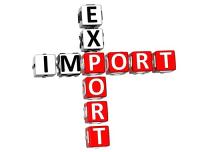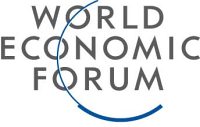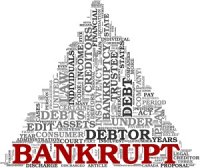
The Forbes Global 2000 is an annual ranking of the top 2000 public companies in the world features in Forbes magazine. The ranking is a comprehensive list of the world’s largest, most powerful public companies, as measured by revenues, profits, assets and market value
The ranking was first published in 2003 and it is a useful indicator for leading public companies in the world. In 2016, the world’s largest companies shows the dominance of the U.S. and China in the current global business landscape. The two countries split the top 10 spots for a third year in a row. The first 3 spots are the China’s biggest banks.
[continue reading…]

The Forbes Global 2000 is an annual ranking of the top 2000 public companies in the world features in Forbes magazine. The ranking is a comprehensive list of the world’s largest, most powerful public companies, as measured by revenues, profits, assets and market value
The ranking was first published in 2003 and it is a useful indicator for leading public companies in the world. In 2015, the world’s largest companies shows the dominance of the U.S. and China in the current global business landscape. The two countries split the top 10 spots for a second year in a row. For the first time, China’s four biggest banks own the top four spots.
[continue reading…]

Malaysia’s international trade experienced tremendous growth throughout the last 4 decades with total trade from merely RM 9.45 billion in 1970 to RM 1.4 trillion in 2014. The trade it plays a large role in Malaysian economy.
Malaysia has managed to maintain a positive trade balance, exporting more goods than it imports except in 1982, 1991 and 1994 – 1997.
In 2014, Malaysia post a trade balance of RM 83.11 billion. The highest was recorded prior to global recession in 2008 at RM143.21 billion.
The table below shows statistical figures on total export, import and trade balance since 1970.
[continue reading…]

World Economic Forum (WEF) which is based in Geneva, Switzerland recently release “The Global Competitiveness Report 2014-2015”. The ranking is based on 12 pillars and 144 criterias to measure the competitiveness for each countries.
The 12 pillars are Institutions, Infrastructure, Macroeconomic environment, Health and primary education, Higher education and training, Goods market efficiency, Labor market efficiency, Financial market development, Technological readiness, Market size, Business sophistication & Innovation.
In the report, Malaysia ranked the 20th most competitive nation among 148 countries up 4 spot from 24th out of 144 countries in 2013-2014 overtaking advanced economies country such as Australia and France. Malaysia remained the second most competitive among Asean and has improved to sixth position among 28 Asia-Pacific countries. Malaysia’s biggest improvement was in the institutions pillar.
The table below is top 25 of the ranking.
[continue reading…]
 “We are going bankrupt in five years time”
“We are going bankrupt in five years time”
“The government has no more money and we have RM500 billion of debt”
“Mismanagement and Corruption has made us poorer”
These are the routine statements you may have heard regarding the state of the Malaysian government finances. But do they hold any water?
A while back, in Book 3 of the 259 Trillion Vs 5 Trillion Series, my co-author and I have presented the calculations of the US Government assets and compared them to the so called “mountain of debts” and found out that the opposite was the truth, that the US has far more asset than debt. People with their own agenda use half-baked statistics to propel “unsuspecting” citizens to become angry and extremely emotional toward their own governments, masking their true intention, which is mostly for power grabs. As such, with such roaring emotional outburst of various camps on small issues, I will try to dispel a few myths on the Government of Malaysia. One should view things with brains and facts and not on sensationalized half-truths and emotion.
[continue reading…]




 “We are going bankrupt in five years time”
“We are going bankrupt in five years time”